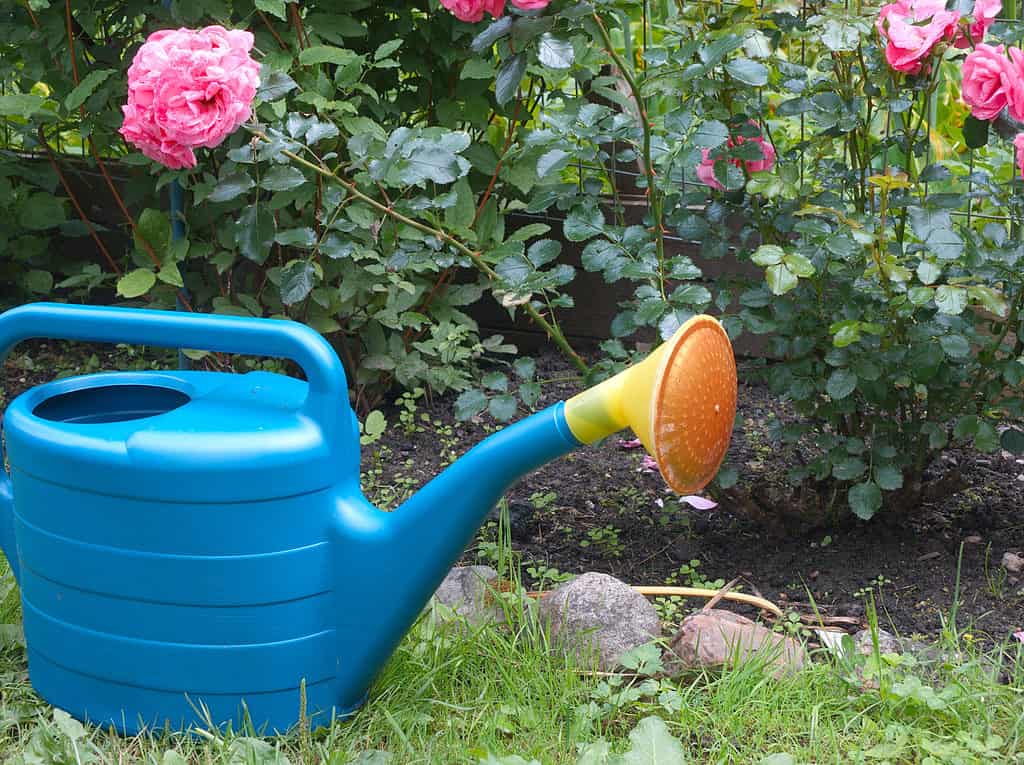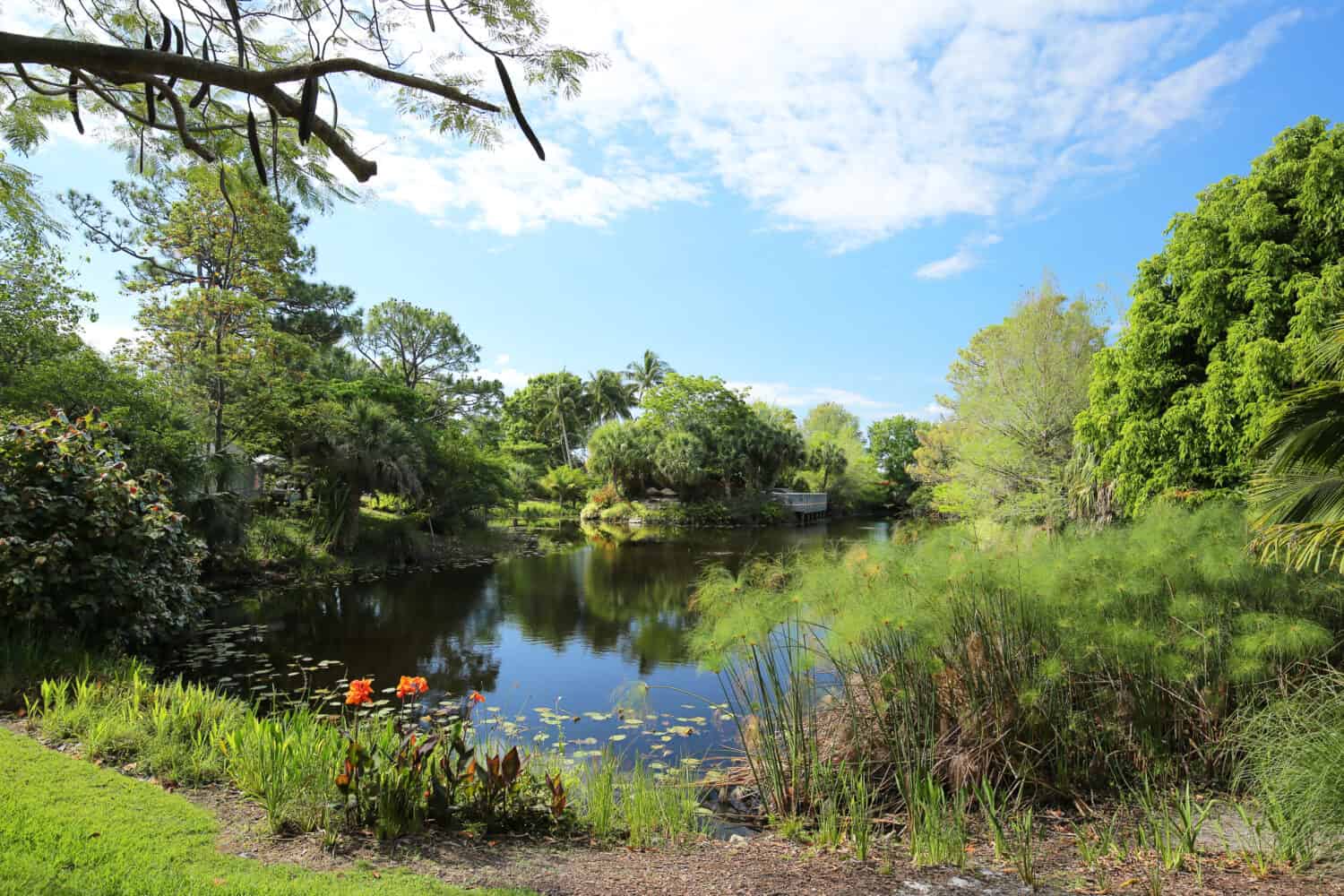Florida is a great place to grow many plants. This tropical/sub-tropical and warm state has fertile soil, plenty of sun, and lots of rain during summer. But what growing zones exist in the state? What are the best plants to grow in each one? Follow along to learn more about Florida’s planting zones, including 4 keys to keeping flowers, shrubs, and trees alive.
What are Florida’s Planting Zones?
Florida is a large state with four planting zones. It makes sense considering the size of the state. Florida is very long. It’s about 447 miles long and 361 miles wide. The Sunshine State has a surface area of 65,758 square miles. Florida is very different depending on where you go. For instance, North Florida is lush and green. Here you can find many natural cool springs. However, heat increases the further south you go. If you aren’t sure what growing zone you’re in, you can always check out this USDA plant hardiness map for Florida.
Growing Zone 8
The first Florida growing zone we’re going to discuss is Zone 8. Planting Zone 8 refers to a warm zone. This zone is great for heat-loving fruits and vegetables as summers are long. Like all the other zones, Zone 8 is divided into two sub-zones, Zone 8a and Zone 8b. Zone 8a has an annual average extreme minimum temperature of 10 to 15 ºF. Zone 8b is slightly higher at 15 to 20 ºF. Some cities in Florida within Zone 8 include Jacksonville, Gainesville, Tallahassee, and Pensacola.
So, what plants can you grow in Florida’s USDA planting Zone 8? You can start many cool-weather crops indoors by January and February like broccoli, lettuce, cauliflower, and kale. Beans you can immediately plant outdoors in late April or early May. During the summer, the best things to grow in Florida’s Planting Zone 8 are corn, cucumber, and squash.

Cauliflower can be grown in USDA Zone 8.
©iStock.com/Tim UR
Growing Zone 9
The next growing zone in Florida is growing Zone 9. USDA Growing Zone 9 is divided into two parts, Zone 9a and Zone 9b. Zone 9a’s minimum annual average extreme temperature ranges from 20 to 25ºF, while Zone 9b is from 25 to 30ºF. Florida cities within USDA Zone 9 include Orlando, Tampa, Saint Cloud, and Kissimmee.
Zone 9 is very versatile. You can grow just about anything in this zone including peppers, tomatoes, firebushes, asters, and more. You can also grow coral beans in Zone 9. They bloom in spring and need partial shade to full sun.
Growing Zone 10
Another growing zone in Florida is planting Zone 10. It’s also divided into two parts, Zone 10a and Zone 10b. The average annual extreme minimum temperature in Zone 10a is between 30 to 35, while in Zone 10b it’s 35 to 40. Zone 10 is most of South Florida including Miami, Fort Myers, and Naples.
The heat and humidity are higher in these growing climates. Plants that thrive in these conditions are azaleas, hibiscus flowers, asters, agave, blanket flowers, and lilies.
Growing Zone 11
Florida’s growing Zone 11 is the smallest growing zone in the state. This last zone only affects the southern tip of Florida, the Florida Keys. This warm and sunny growing zone has an average annual extreme minimum temperature between 40 to 45. Cool winters are rare here. Instead, the plants that you can grow in the Florida Keys are tropical plants that require plenty of sun.
If you live in the Florida Keys or a place within USDA growing Zone 11, you can grow coconut palms, marigolds, rosemaries, lychee, petunias, dragon fruit, and star fruit.

The Florida Keys is in USDA Zone 11.
©Mia2you/Shutterstock.com
4 Keys To Keeping Flowers, Shrubs, and Trees Alive
Florida is known for its long, hot, and wet summers. This sunny and warm state is a gardener’s dream, but plants can still struggle here. The humidity, for instance, can increase your plant’s chances of attracting pests and diseases. Too much intense sun can also kill your plant, or stress it out. Follow along to learn the 4 keys to keeping flowers, shrubs, and trees alive.
1. Water During the Early Morning
Your plant will appreciate water at any time, but it’s best to water your plants when the sun isn’t beating down. This gives your plant a chance to absorb the water without the sun evaporating it quickly. Although tempting to water your plants at night, this can encourage fungus, pests, and root rot as the water sits longer.

Your plant will appreciate water at any time, but it’s best to water your plants when the sun isn’t beating down.
©iStock.com/victorass88
2. Fertilize
Another key to keeping your plants alive and flourishing in Florida is to fertilize as needed. Did you know not all plants need fertilizer? If you add too much fertilizer, your plant will wilt, lose color, and drop flowers. It’s tricky though because these signs can also indicate your plant needs fertilizer. Start with small amounts in spring. Don’t fertilize your plants while they are dormant in winter.
3. Use Mulch
To discourage weeds and over-watering, you can also add mulch to the base of your plant. This also keeps the plant’s roots protected from too much sun.
4. Prune Frequently
Last but not least, to keep your plants alive for long in Florida, you should prune as needed. Don’t leave dead leaves or flowers on your plant. Trim them so your plant can focus its energy on growing new leaves or producing fruit. Always sanitize your pruning clippers before using them on other plants. This way you don’t accidentally spread diseases.
Thank you for reading! Have some feedback for us? Contact the AZ Animals editorial team.








